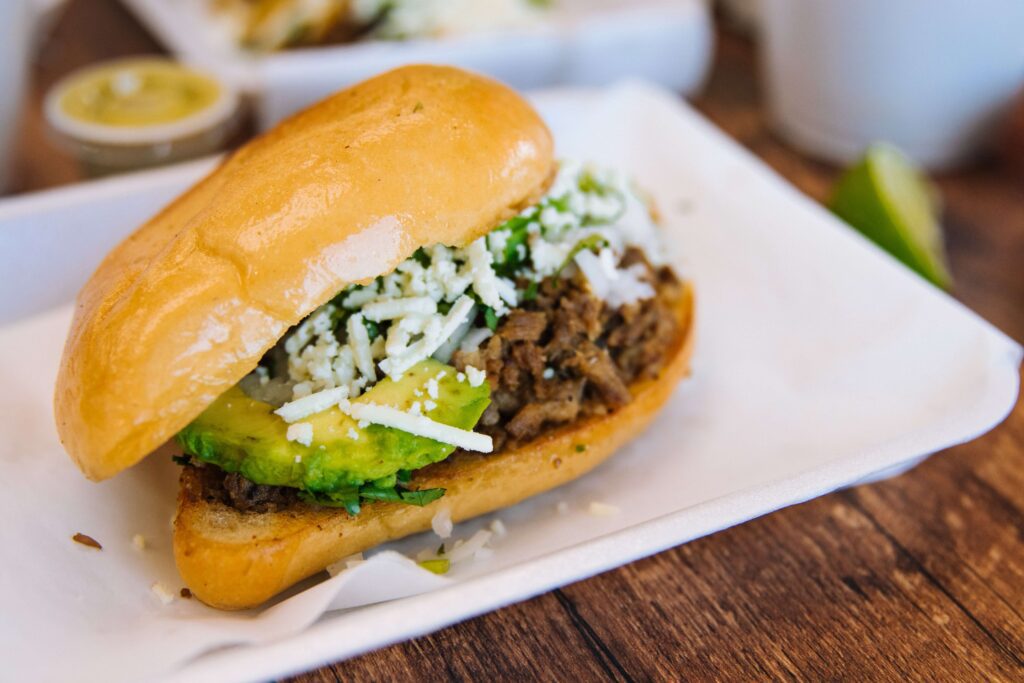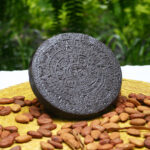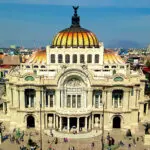“A few weeks ago, during the Historic’s Center Food Tour, one of our saboristas couldn’t believe I did not know what a chimichanga was… The truth is, I had never seen one in Mexico until that day, when I learned it is basically a fried burrito!”
Majo
Many foreigners think of taco shells, burritos, chimichangas, and chili con carne when they speak of Mexican traditional food. However, almost all those dishes belong to the Tex-Mex regional cuisine, that is prepared in some states in the northern part of Mexico but is not at all popular in the rest of the country.
Although we do love tacos, tortas, and mole, there are many other dishes in our territory that we truly enjoy. In fact, we had to divide our culinary expressions into six different regions: Northwest, Northeast, South, Pacific, Center, and Southeast, each of them with local ingredients, techniques, and dishes.
The Mexican Palate
It is important to mention that taste has an emotional component that makes individuals like or dislike certain flavors. Therefore, education and culture are defining influences in the creation of each person’s palate. Because of this, most Mexicans truly enjoy eating everything with corn, lime, black beans, and chili, because we’re used to these flavors since the pre-Hispanic times.
One of the best ways to learn what food we eat in Mexico is by visiting our markets. It is there where we have products form all Mexican land, ready to be transformed into exquisite quality and flavored dishes.
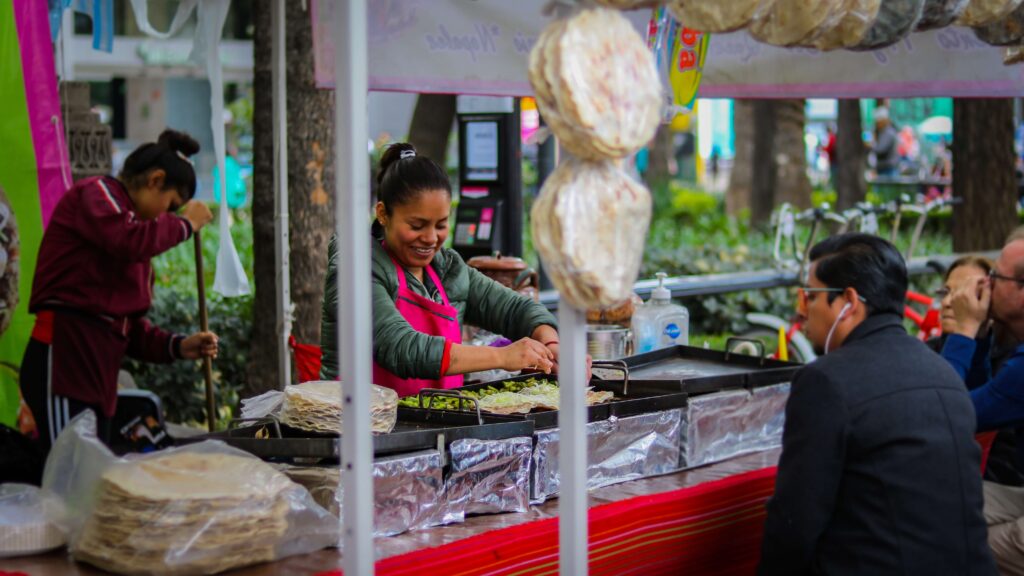
What Mexicans eat on a daily basis englobes dishes and ingredients from all around the world, starting off with a pastry and a coffee, having a salad, a pasta or sushi for lunch, and ending the day with a smoothie or a quesadilla. Of course, to get to this globalized point, it took us thousands of years of food evolution, changes in traditions and culinary habits.
Mexican Food through Time
The pre-Hispanic cuisine had the milpa as its main basis. This harvesting system works around the symbiosis between plants like corn, beans, and chili, with wild animals. The first version of dishes like mole, tamales, prepared quelites, the traditional cacao drink, and of course, tortillas, come from this time. According to the Mendocino Codex, Nahuas were used to eating tortillas every day. As early as three years old, kids ate half a tortilla, when they turned four, they ate a whole tortilla, one and a half tortillas when they turned six, and finally, thirteen-year-olds could eat two tortillas.
From the Spanish conquest in 1521, the mestizo cuisine emerged, combining local ingredients with Arab, Asian, and European products and techniques. During these times, delicacies like the arroz con leche and the churros were adopted, dishes like tamales and black beans were enhanced with pork fat, and iconic delights like the stuffed chilis, the pambazos, and the quesadillas were born.
In 1821, Mexico declared its independence and celebrated it with enchiladas and coffee. Years later, the French influence arrived in our country, and many haute cuisine and nouvelle cuisine styled restaurants and pastry shops opened. It was then, during the presidency of Porfirio Díaz when wine, dishes with sour cream, cheese, and butter dominated menus. Also, pastries or pan dulce came to Mexico to stay here forever.
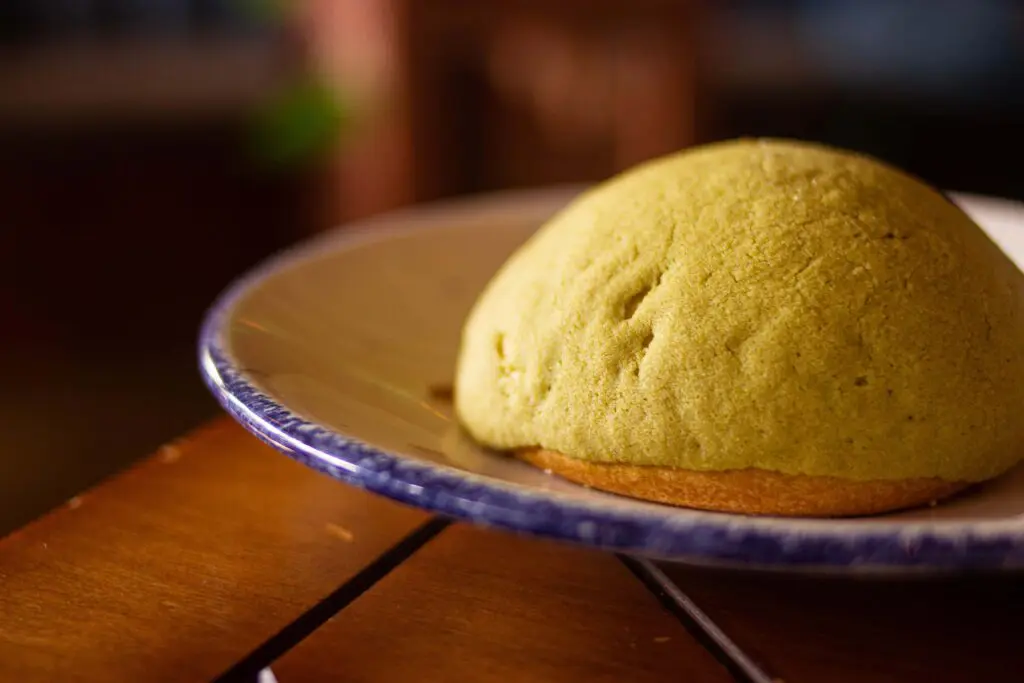
Food Nowadays
With the Mexican Revolution, from being sophisticated and elegant, food started being prepared with low-cost ingredients, simple flavors, and easy techniques. During this time, dishes from the Northern part of the country such as barbacoa, beans with pork rinds, and wheat tortillas became popular.
Finally, the 20th Century came to redefine Mexican gastronomy, transforming the eating habits, but conserving their essence. Globalization, trade agreements, and the presence of foreigners in Mexico were key to the creation of al pastor tacos, molletes, gringas, and Cuban tortas. Many national brands of industrialized products were born, like Chocolate Abuelita, Gansito or Galletas María, and at the same time, international brands such as Hershey’s and Dr. Pepper arrived. Also, several Italian, Japanese, Chinese, Lebanese, and even Russian restaurants opened their doors, mainly in Mexico City.
Nowadays, on the 21st Century, the food Mexicans really eat is the result of an evolution of techniques, flavors, preferences, and habits acquired with time. However, it is interesting that even now, our every day food is the same way Manuel Payno described in his 1960 book “The bandits of Río Frío”, where he narrates that his protagonist enjoys for breakfast a plate with scrambled eggs with longaniza, green chili rajas, peas, tomato, avocado, and tortillas, to later have a chicken puchero with ham, beef, chickpeas, and vegetables for lunch.
Even though we sometimes crave pizza, sushi, pasta, or sandwiches, we Mexicans LOVE tacos, tortas, enchiladas, scrambled eggs, broths, quesadillas, and homemade stews, provided they’re prepared with love and our national seasoning.
If you’re interested in eating like a real Mexican, I encourage you to live one of our food tours, where you’ll discover why we have our ingredients and traditional food so entrenched.
